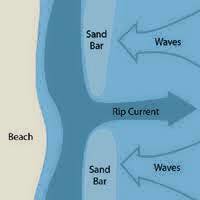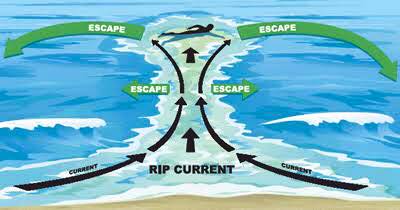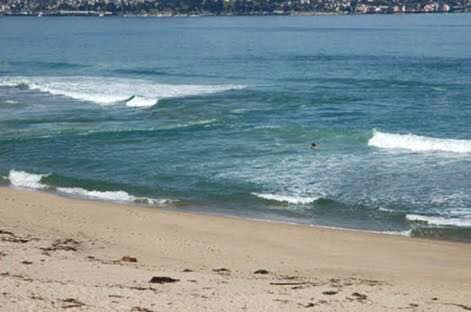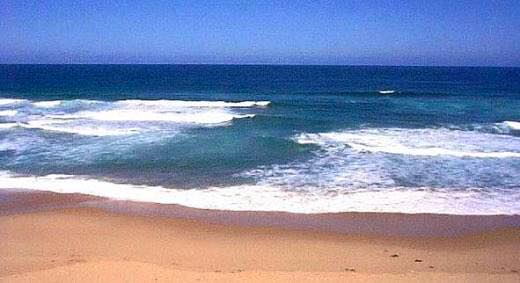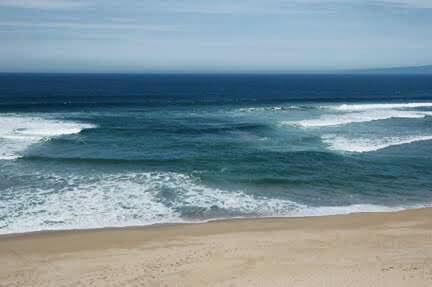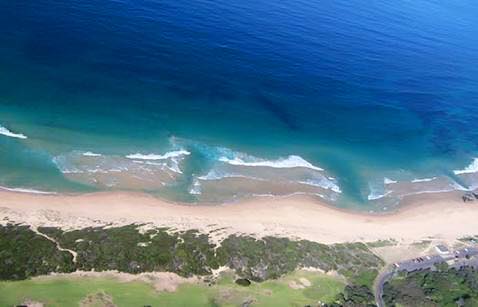Training Resources
|
This (link) contains 39 short video clips designed to support or lead the teaching of both first aid and lifeguard theory - including cold water shock, hand signals, CPR, how to spot a rip current and how to survive a rip current... and many more.
|
Learn CPR in 15 minutes with BHF
be prepared to save a life |
Understanding waves
Read this RNLI article about different types of waves and how to enjoy them safely.
Read this RNLI article about different types of waves and how to enjoy them safely.
How to spot a rip, and what to do if you get caught in one
1. The easiest thing to remember is that often the safest/calmest most enticing looking area along a beach is usually a rip. A rip is usually the area devoid of wave activity and appears darker and deceptively calmer. It can sometimes appear milky or turbulent or have debris, but it is always pretty much void of wave activity. All that water coming in via waves has to go back out somehow, this is what a rip is. (see photos).
2. Always take 5-10 mins when you get to the beach to observe surf conditions and identify where these areas are.
3. If you are caught in a rip, DO NOT PANIC. Go into floating mode and raise one arm as a distress signal when possible. See which direction the rip is taking you, is it straight out or at an angle? Once you have determined this, and if you have the energy, swim to the right or left of the direction of flow, never against. Some rips can move at 3 times the speed of an Olympic swimmer, you won't win! If you cannot swim out to either side of the rip, just go with it. Most rips won't take you out very far, and will usually spit you out not long after they take you, so keep calm and save your energy for the swim back to shore.
1. The easiest thing to remember is that often the safest/calmest most enticing looking area along a beach is usually a rip. A rip is usually the area devoid of wave activity and appears darker and deceptively calmer. It can sometimes appear milky or turbulent or have debris, but it is always pretty much void of wave activity. All that water coming in via waves has to go back out somehow, this is what a rip is. (see photos).
2. Always take 5-10 mins when you get to the beach to observe surf conditions and identify where these areas are.
3. If you are caught in a rip, DO NOT PANIC. Go into floating mode and raise one arm as a distress signal when possible. See which direction the rip is taking you, is it straight out or at an angle? Once you have determined this, and if you have the energy, swim to the right or left of the direction of flow, never against. Some rips can move at 3 times the speed of an Olympic swimmer, you won't win! If you cannot swim out to either side of the rip, just go with it. Most rips won't take you out very far, and will usually spit you out not long after they take you, so keep calm and save your energy for the swim back to shore.


